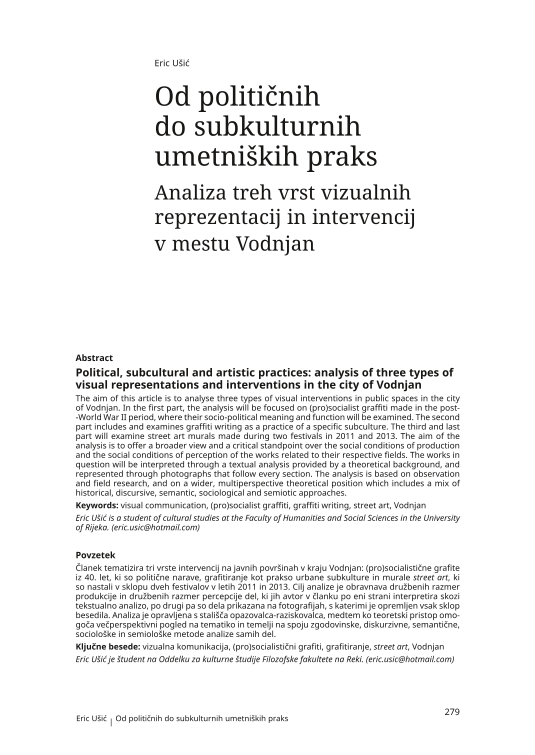The aim of this article is to analyse three types of visual interventions in public spaces in the city of Vodnjan. In the first part, the analysis will be focused on (pro)socialist graffiti made in the post-World War II period, where their socio-political meaning and function will be examined. The second part includes and examines graffiti writing as a practice of a specific subculture. The third and last part will examine street art murals made during two festivals in 2011 and 2013. The aim of the analysis is to offer a broader view and a critical standpoint over the social conditions of production and the social conditions of perception of the works related to their respective fields. The works in question will be interpreted through a textual analysis provided by a theoretical background, and represented through photographs that follow every section. The analysis is based on observation and field research, and on a wider, multiperspective theoretical position which includes a mix of historical, discursive, semantic, sociological and semiotic approaches.




